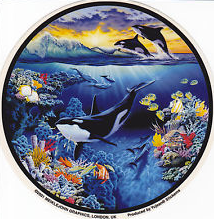Doing good with Dundee cakes
If fundraising was left to village fetes, the voluntary sector would be a nicer, if poorer, place.
- Written by
- George Smith
- Added
- April 07, 2014

No sooner had I come back from doing my duty at the village school’s summer fete when the bell rang. It was the good Doctor Wood, a neighbour, collecting for the lifeboats. Another couple of pounds changed hands, bringing the afternoon’s philanthropy to nearly a tenner. I had acquired a tin of pink salmon in the tombola, a Dundee cake, half a yard of bedding plants and three RNLI stickers from Doctor Wood. This must have been about par for the flashier donors around here.

Say there’s a hundred such plutocrats in the village and reckon that there must have been several hundred more contributing at a lower level. That’s a couple of thousand pounds raised on Saturday afternoon in a small Kentish village. Repeat it several times a year (and we do) and the statistics begin to get awesome. Doctor Wood will be back in a week or two for Help the Aged and the church flower festival is next weekend. I forgot to mention that the Saturday morning shopping trip in our local market town featured a trad jazz band outside Boots and the young mums collecting for the local playgroup. Add another couple of quid.
Not that we remain unmoved between house-to-house collections and special events (did I mention that the Fun Run was last weekend?) judging by the car stickers around here, WWF has a 50 per cent penetration of all households and Christian Aid something similar from May to September. Our admirable Women’s Institute is forever passing radical resolutions and ending the weekly sessions with a collection for something or other. Let it not be said that our wealth is other than modestly recycled by the week.

Of course, it is painless. It takes a misanthrope to avoid the jollity at the school fete and the chance to gossip with neighbours. Or to emerge without a Dundee cake and bedding plants. It takes a surly temperament to walk eyes down past the playgroup mums. And saying no to Doctor Wood would risk moral obloquy on a scale that would cause a frisson every time you walked into the village shop.
We all know each other, you see. That was Wendy behind the cake stall at the fete. The bedding plants are donated by Mrs Price. Doctor Wood marks the footpaths for us. I am known to be bohemian because of the greenpeace sticker in the back of the Fiat and as the sole reader of The Guardian in the village.
This is idyllic fundraising for it must extract something like ten thousand pounds annually from a village of seven hundred souls by way of collective effort. Add in the private and discreet giving and you can fairly double or treble that sum. Call it twenty-five thousand pounds a year from those seven hundred people; thirty-five pounds a head.

It is a sum that leaves us ahead of the latest CAF statistics for charity giving. If it were touted as an index of village philanthropy, we would be lauded in the local press as a citadel of decency and niceness. We are nothing of the sort, of course; we are merely buying Wendy’s Dundee cakes and passing the time of day with Doctor Wood. Our giving forms a sort of licence to live here. In any sense of social responsibility, thirty-five pounds a head is not good enough.
But how do you make the difference? Doctor Wood is never going to demand a fiver for his RNLI stickers and there is a common understanding that a Dundee cake has its rightful price. Yet, I yearn for our beleaguered village school to ask those of us who can afford it to give lots more. But to provoke them to do so would be seen as a breach of local taste. I have actually offered my services in this mode. I was told that it would upset people. I know what they mean, for the intervention of full-blooded fundraising into a community so genuinely decent and altruistic would be alien and aberrant.
So, we shall remain under-achievers, giving less that we could because the manner of our giving is so pleasant. Switch the geographic coordinates and you get the scale of the problem. In the South London streets that I left to move here, there would be no Doctor Wood to collect and not many doors that would open if he did. There are few fun runs around Brixton and trade in bedding plants is scant. The indices of wealth are probably similar but even our cost apparatus of giving is largely absent. Is the citizenry of yuppified Inner London good for thirty-five pounds a year?
Our giving, like so much else in the UK, is imprisoned by our social structures, our national suspicion of change and virility, our acquiescence in the minimal gesture. It will take a bold charity to challenge these things And I am far from convinced that such boldness would be fruitful. As my local head teacher said, we don’t want to upset people.


















